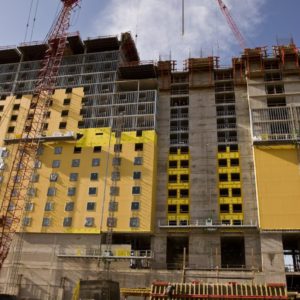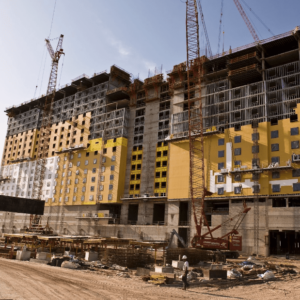Airtight buildings lessen energy consumption, save money, help protect the environment, and improve indoor environmental quality (IEQ). Achieving building air tightness requires commercial architects, contractors, and developers to incorporate innovative technologies and materials, like StoTherm® ci® continuous insulation (CI) wall systems (EIFS).
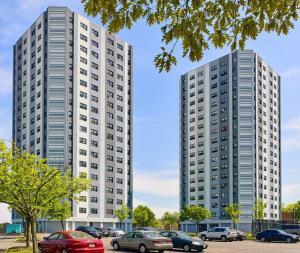
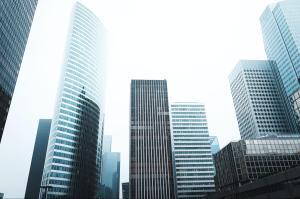
StoTherm® ci is a single-source, fast-to-install approach to commercial construction. It combines CI, water and air-resistive barrier, drainage, and many finish options to create a high-performing, sustainable, attractive wall cladding. The durable and unique system will help create a more sustainable society for future generations.
Why We Need Airtight Buildings
In the U.S., commercial buildings account for 19 percent of the primary energy consumed. Constructing airtight buildings will save money and combat fossil fuel dependency. Airtightness also reduces CO2 emissions, a known cause of global change and climate change.
Achieving Airtightness in Buildings with Air Barriers
Air barriers include one or more products that create a continuous plane around a building or home, to prevent uncontrolled air, moisture, and heat flow in and out of the building envelope. The building enclosure includes the above- and below-grade components that physically separate the structure’s interior and exterior environments.
High-Performing air barriers should include these four vital components:
1. Continuous over the entire building enclosure
2. Airflow impermeability
3. The stiffness and strength to resist forces acting on them during and after construction
4. Structural durability over the expected lifetime of the structure
When tested according to ASTM E 2178, an air barrier’s air permeance should not exceed 0.02 L/(s·m²) at a pressure difference of 75 Pa (0.004 cfm ft2 at a pressure difference of 1.56 lb ft2). Air permeance represents air flow through a material. In contrast, air leakage flows through holes and gaps.
Air Barrier Code Requirements
The International Building Code (Section C402.5.1) and International Residential Code (Table R402.4.1.1) list code requirements for commercial and residential structures.
Five Tips for Achieving Airtightness in Buildings
Architects, builders, and developers can achieve airtightness in buildings by utilizing innovative materials and methods.
1. The Whole-Building System Approach to Airtight Buildings
Implementing the whole-building system approach treats a building as a single energy system, where each component impacts the entire building’s airtightness and efficiency. During the design phase, the building team works together to select construction materials and systems that maximize airtightness and minimize energy use throughout the building envelope.
2. Install an All-In-One Continuous Insulation Wall System
Achieving airtightness requires CI in the exterior walls. The ASHRAE 90.1 and the 2021 IECC require CI, as defined in the ASHRAE 90.1-2010.
Fortunately, energy-efficient, code-compliant exterior insulation and finish systems (EIFS), like StoTherm® ci Wall Systems Drainable EIFS, provide a superior solution for achieving CI and air tightness.
StoTherm® ci Wall Systems Drainable EIFS
StoTherm® ci facade systems combine continuous insulation (CI), air and water-resistive barrier, drainage, and various surfaces and textured finishes to create a sustainable wall system. The unique and durable system saves money by minimizing energy bills and sustains curb appeal. Sto offers a variety of StoTherm® ci cladding systems to meet every need:
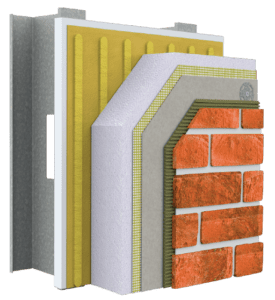
StoTherm® ci
StoTherm® ci includes the StoGuard® air and water-resistive barrier system and energy-efficient EPS insulation.
StoTherm® Mineral ci
The StoTherm® ci Mineral System includes a non-combustible mineral wool exterior CI and air and water-resistive barrier with Sto’s quality finishes.
StoTherm® ci XPS
StoTherm® ci XPS combines high R-value XPS insulation into the wall system and StoGuard® fluid-applied air and water-resistive barrier.
StoTherm® ci MVES
The StoTherm® ci MVES (masonry veneer engineered system) features manufactured masonry veneer in cultured stone, thin brick, natural stone, and ceramic tile, fully integrated seamless air and water-resistive barrier, and either EPS or XPS insulation.
StoTherm® ci HI-LM 180
The energy-efficient StoTherm® ci HI-LM 180 CI wall system includes StoTherm® insulated cladding, StoGuard® waterproof air and water-resistive barrier, and drainage over concrete masonry unit substrates. StoTherm® ci HI-LM 180’s engineering achieves the testing requirements for large and small missile impacts.
StoTherm® ci 1177- LM
StoTherm® ci 1177- LM exterior wall cladding provides seamless air and moisture resistance with CI, advanced drainage, and Sto Armor Mat XX Mesh for additional impact resistance and reinforcement over glass mat gypsum sheathing. StoTherm® ci 1177-LM meets the testing requirements for large and small missile impacts.
StoTherm® ci 1177-SM
The StoTherm® ci 1177-SM exterior wall cladding system includes seamless continuous insulation, air and water-resistive barrier with advanced drainage capabilities over glass mat gypsum sheathing.
StoTherm® ci HI-PLY
StoTherm® ci HI-PLY exterior wall cladding combines seamless moisture and air barrier with CI and advanced drainage over CDX exterior plywood sheathing.
3. Insulated Roofs
High-performing roofing insulation reduces heat loss during the winter by 25 percent. It also minimizes moisture intrusion through the roof and stops the growth of unhealthy and structurally damaging mold. In addition, cool and insulated roofs lower energy bills and enhance the building’s indoor environmental quality.
4. Windows and Doors for Airtightness
About 20 percent of heat loss happens through cracks in doors, skylights, and windows. Achieving airtightness should include ENERGY STAR-certified skylights, windows, and doors, to reduce heat loss by 25 to 50 percent. In addition, darkening windows can control glare and brightness from direct sunlight, and shades and louvers can block out the summer’s heat, but let the warmth in during the cold months.
5. Building Energy Modeling (BEM)
Building Energy Modeling (BEM) helps architects and builders achieve airtightness. BEMs use project-specific features like creating orientation, window location, weather, building methods and materials, and more. BEMs help to estimate a building’s energy efficiency and to meet energy codes. The BEM can also minimize building costs by identifying insulation levels needed to achieve performance targets cost-effectively and offset an expensive, higher-quality envelope by requiring a smaller HVAC system.
Achieve Airtightness in Buildings with Sto Building Products
Achieving airtightness in buildings requires architects, buildings, and developers to incorporate innovative methods and materials, like StoTherm® ci cladding systems.
An energy-efficient, code-compliant, durable, and attractive StoTherm® ci Wall System is a superior wall solution for achieving airtightness in buildings. Check out our Georgia King Village Case Study for a great example.
Contact our experienced representatives today at 1-800-221-2397 for more on how to achieve airtightness in buildings. To learn more about the benefits of using a building enclosure system, download, “The Case for Engineered Building Enclosure Systems“.
